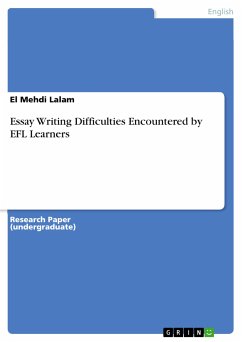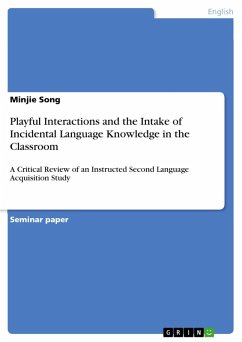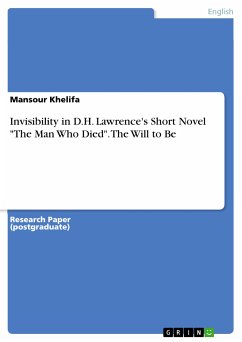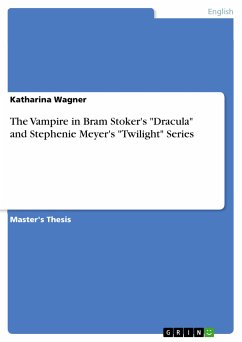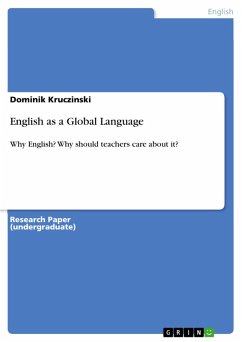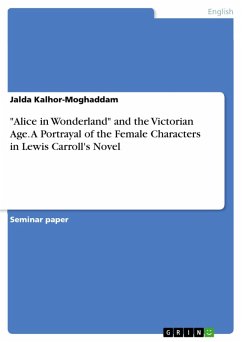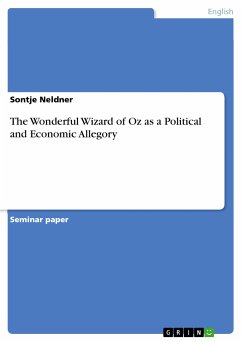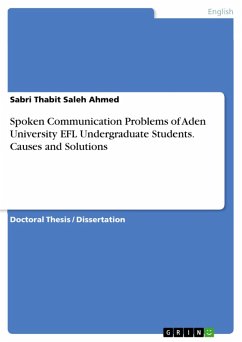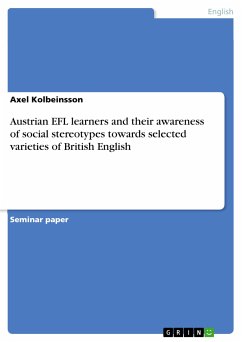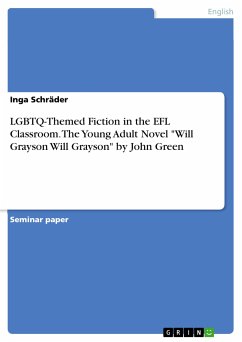
LGBTQ-Themed Fiction in the EFL Classroom. The Young Adult Novel "Will Grayson Will Grayson" by John Green (eBook, PDF)
Sofort per Download lieferbar
Statt: 17,95 €**
13,99 €
inkl. MwSt. und vom Verlag festgesetzt.
**Preis der gedruckten Ausgabe (Broschiertes Buch)
Alle Infos zum eBook verschenkenWeitere Ausgaben:

PAYBACK Punkte
0 °P sammeln!
Seminar paper from the year 2018 in the subject English Language and Literature Studies - Literature, grade: 1,7, University of Münster, language: English, abstract: The level of tolerance towards all types of Otherness has increased during the past years, there is still discrimination against anything other than heterosexuality. Especially in schools, sexual and gender differences are seldom addressed and if, they are presented as deviant sexual behaviour. Teachers often lack professional competences and they even resist to address LGBTQ issues. As a consequence, homophobia and heterosexism ...
Seminar paper from the year 2018 in the subject English Language and Literature Studies - Literature, grade: 1,7, University of Münster, language: English, abstract: The level of tolerance towards all types of Otherness has increased during the past years, there is still discrimination against anything other than heterosexuality. Especially in schools, sexual and gender differences are seldom addressed and if, they are presented as deviant sexual behaviour. Teachers often lack professional competences and they even resist to address LGBTQ issues. As a consequence, homophobia and heterosexism are present in many classrooms which can affect both learning and teaching negatively. The problem of heterosexism is also related to the foreign language classroom. Both in coursebooks as well as in literature students are often confronted with heteronormative representations and characters. Placing emphasis on this problem, I will take the LGBTQ-themed young adult novel Will Grayson Will Grayson by David Levithan and John Green into consideration and aim to prove that this novel is a good way to challenge students believes and perspectives about sexual and gender differences and to counter and normalize homophobia in the English as a Foreign Language (EFL) classroom. To achieve this goal, I have organized my term paper into three main sections, each having two subsections.
Dieser Download kann aus rechtlichen Gründen nur mit Rechnungsadresse in A, B, BG, CY, CZ, D, DK, EW, E, FIN, F, GR, HR, H, IRL, I, LT, L, LR, M, NL, PL, P, R, S, SLO, SK ausgeliefert werden.




